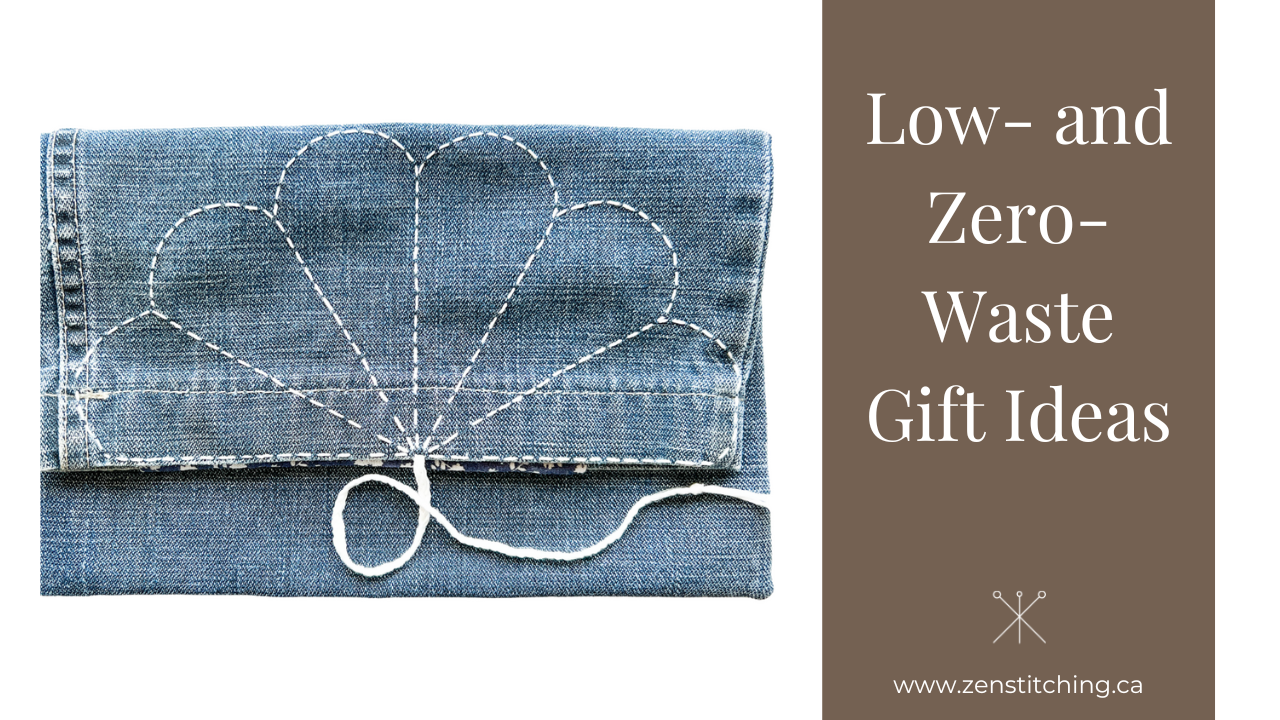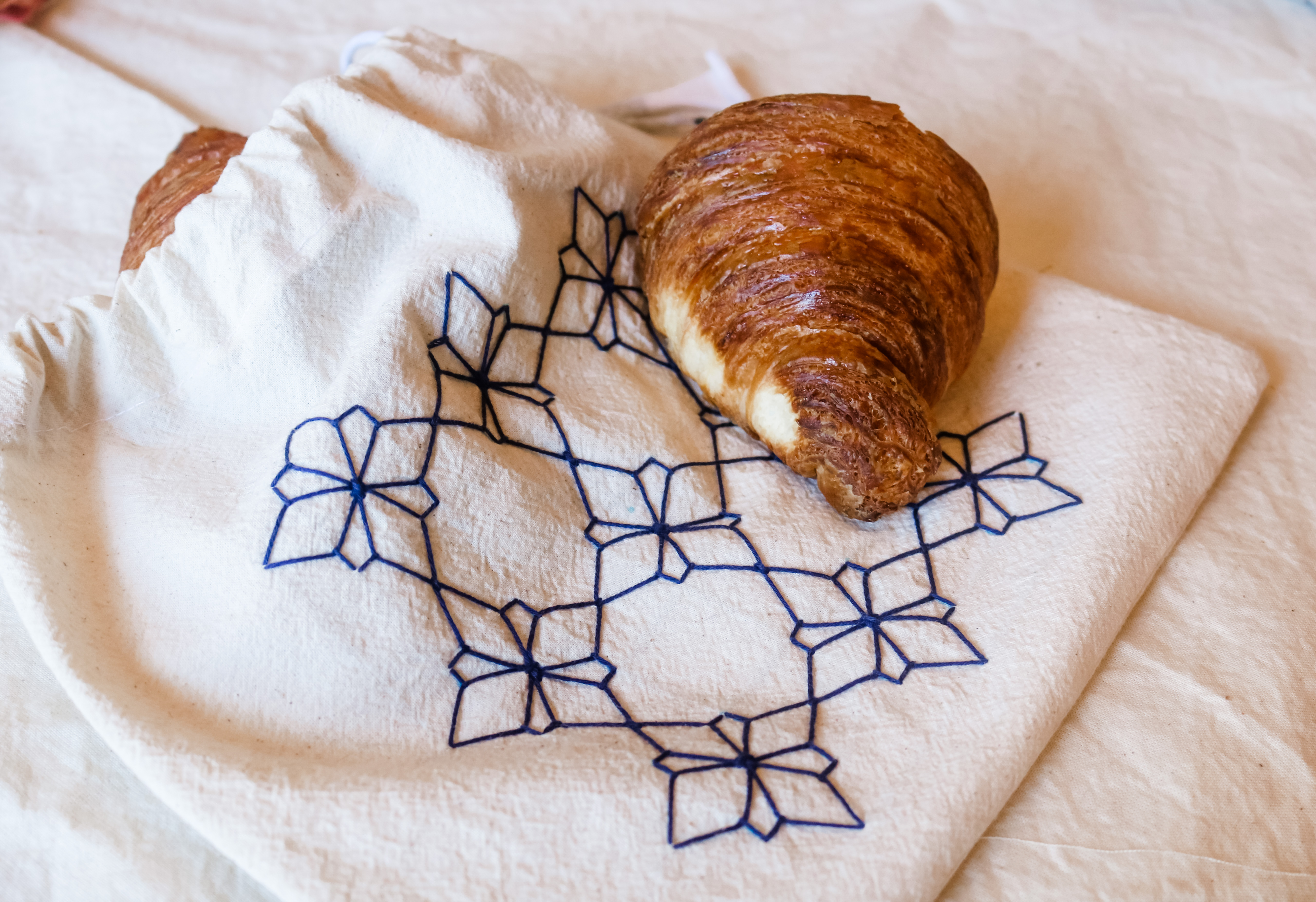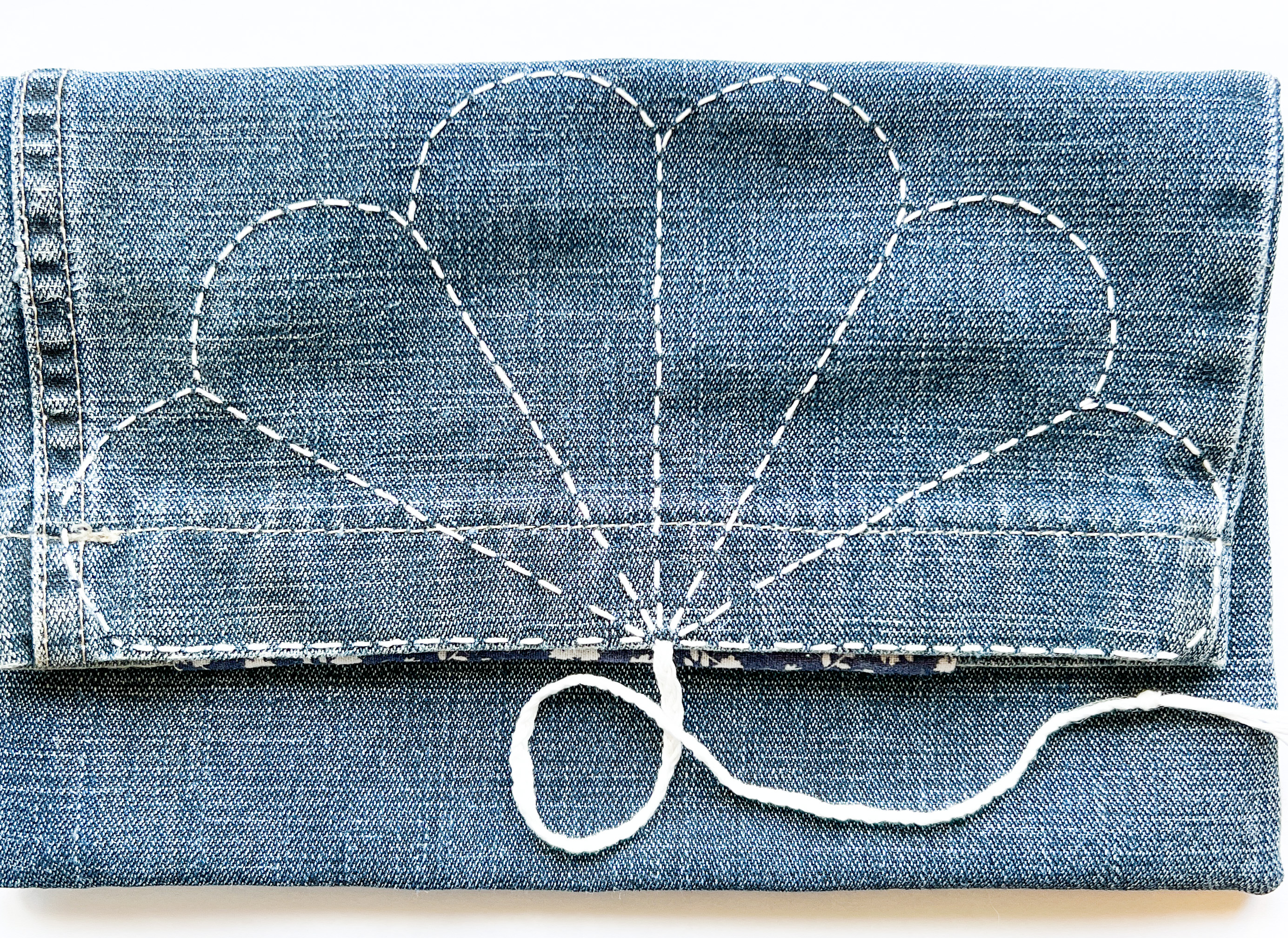Low- and zero-waste sashiko gift ideas
Dec 03, 2022
It’s the most wonderful time of the year!
December is upon us, and many of us are beginning to think, if we haven’t already, about the upcoming gift-giving holidays. I don’t know about you, but I love to give gifts - it’s so uplifting to find that perfect something special for someone you love!
Unfortunately, the gift-giving season also tends to involve a lot of waste. Store-bought gifts come packaged in plastic, and are often wrapped in non-recyclable wrapping paper. It seems there is always something to throw away!
This year, I’m trying to be more eco-friendly in my gift giving. For me, this means reducing packaging by making some of my own gifts, and reducing wrapping paper by making my own gift wrappings. I know that many of my readers are also environmentally conscious, so I thought I would share my ideas in case you wanted to use them, too!
1. Hand-stitched cards
If you don’t have a ton of time, handmade cards are a great way to add a personal touch to a gift and save the plastic sleeve a store-bought one would come in! All you need is cardstock, some fabric scraps, and thread - and a pen to write your heartfelt message inside!
Just fold your cardstock in half, and trim as necessary for the size of card you want. Then you can trim your fabric scraps to fit, and decorate them with your hand stitching. Simply glue or sew the stitched fabric to the front of the card, write your personal message inside, and you’re good to go! Here are some beautiful examples from Alice Paradis, a Sashiko Stitch Club member.
2. Reusable gift bags
These gift bags are a great way to cut back on those plastic-coated paper gift bags from the big box store! Fabric bags are sturdier and can be passed back and forth for longer, or even reused for other purposes.
You can make these yourself pretty easily and embellish them with your own stitching, but if you’re pressed for time, you could always buy a cloth bag and add your stitching to it! It will still be more eco-friendly to pass the cloth bag back and for than to opt for disposable ones.

3. Furoshiki wrapping cloths
Furoshiki cloths are traditional Japanese square-shaped cloths, typically used for wrapping gifts or carrying items. They are gaining popularity in the eco-friendly crowd, because they’re so great for replacing that non-recyclable wrapping paper we’re used to!
These are so easy to make! All you need is a sturdy, square-shaped piece of fabric, with the edges hemmed to prevent fraying. From there, you can decorate your cloth with whatever sashiko stitching you like!

4. Hand-stitched hana fukin
No, it’s not a swear word! Found in many Japanese households, hana fukin literally means “kitchen cloth” or “flower cloth” - and these cloths are incredibly versatile. They can be used as placemats, for drying or storing vegetables, straining soup stock, and so much more. I even have a whole blog post on the topic!
These cloths are made from stitching two pieces of loose-weave fabric together and can be embellished with all kinds of sashiko designs.
5. Sashiko denim wallet / purse
This one requires some old jeans or scraps of fabric, but with a bit of planning ahead it’s still simple enough to get this practical and pretty gift ready in time for the holidays! And, it has the eco-bonus of not just upcycling fabrics, but also is a stylish purse or pouch to put things in (very handy for organising paint brushes etc).
Learn how to make this in my Sashiko Stitch Club >>




